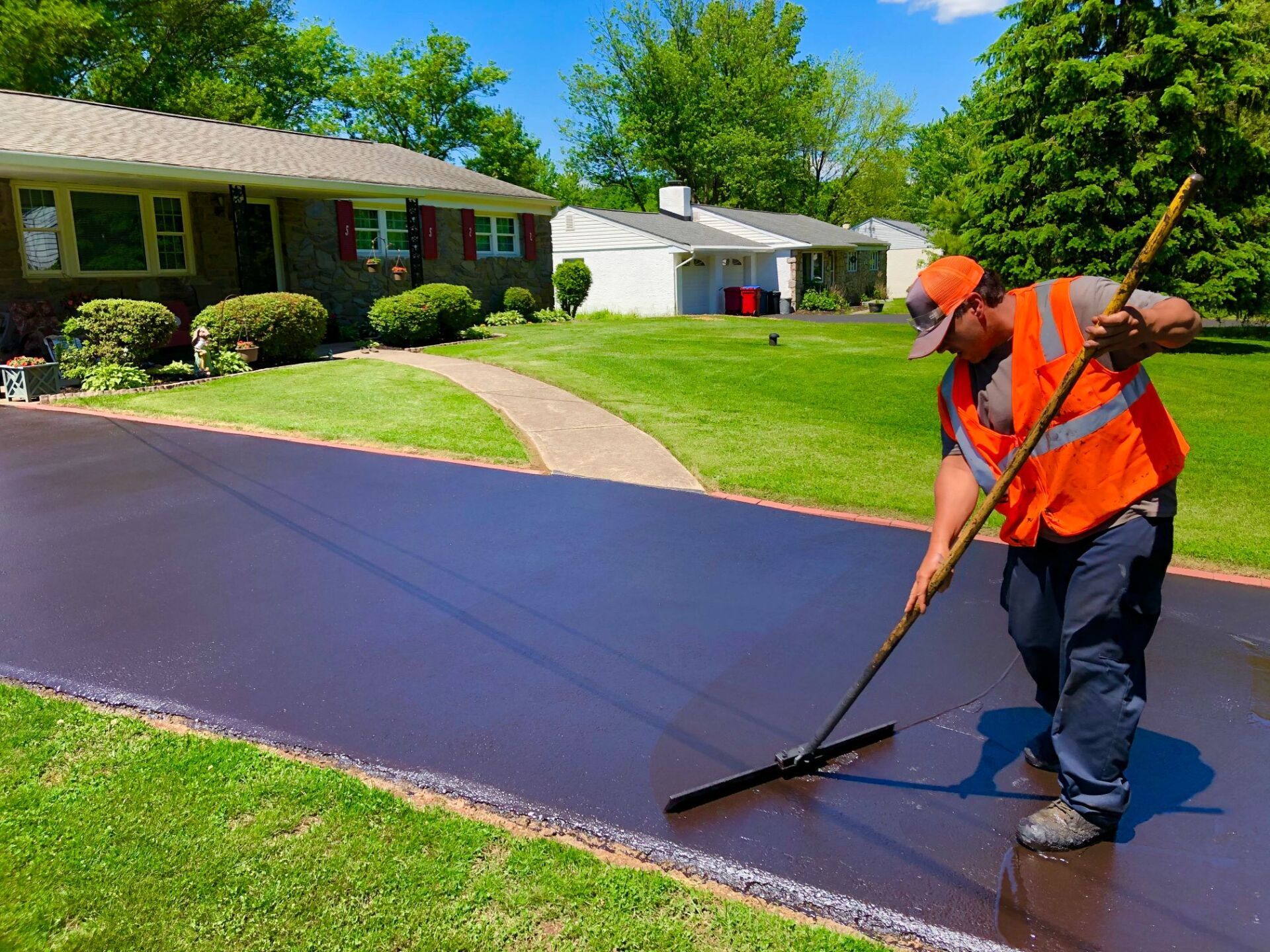Grasping Tilted Parking: How Asphalt Sealing Improves Business Lots
Wiki Article
Hot Mix Asphalt: A Sustainable Service for Pavement
Hot Mix Asphalt (HMA) has arised as a leading sustainable selection for sidewalk services, providing a myriad of cutting-edge innovations and ecological benefits. As the demand for eco-friendly construction methods expands, checking out the subtleties of HMA's sustainability can offer beneficial understandings right into the future of pavement remedies.Environmental Advantages of Warm Mix Asphalt

In Addition, Warm Mix Asphalt aids to mitigate metropolitan warmth island effects. Its dark shade soaks up sunlight, reducing the amount of warmth mirrored back right into the ambience contrasted to lighter-colored sidewalks. This can lower ambient temperatures in city locations, decreasing the demand for a/c and eventually minimizing energy usage.
In addition, Warm Mix Asphalt contributes to enhanced stormwater administration. Its permeable nature enables water to recharge and infiltrate the sidewalk groundwater supplies, reducing runoff and the danger of flooding. These ecological advantages make Hot Mix Asphalt a sustainable selection for paving freeways and roadways.
Power Effectiveness in HMA Production
Is power performance a crucial variable in the manufacturing of Hot Mix Asphalt (HMA)? Power plays a significant role in the manufacturing of HMA, influencing both price and ecological sustainability. One vital aspect of energy effectiveness in HMA production is the usage of cozy mix asphalt (WMA) technologies.In addition, advancements in plant technologies have actually caused even more energy-efficient HMA production procedures. Modern plants are made with features like recycled asphalt pavement (RAP) processing capacities, reliable heater systems, and improved insulation, all adding to energy savings. By enhancing energy usage in HMA manufacturing, the sector can minimize its carbon footprint while maintaining premium sidewalk products. Energy effectiveness is, as a result, a vital consideration in ensuring the sustainability of Hot Mix Asphalt manufacturing.
Recyclability of Warm Mix Asphalt
The recyclability of Warm Mix Asphalt (HMA) is a crucial aspect of its sustainability and lasting environmental impact. HMA is one of the most recycled materials in the USA, with over 100 million heaps of recovered asphalt sidewalk (RAP) being recycled annually in new pavement construction. Reusing HMA provides several ecological benefits, such as lowering the demand for virgin products, reducing energy intake during production, and reducing the quantity of waste sent out to land fills.The procedure of recycling HMA involves grating the existing sidewalk, crushing it into smaller sized items, and mixing it with brand-new accumulation and asphalt binder to develop a recycled mix. In general, the recyclability of HMA plays a significant function in advertising lasting methods within the pavement sector.

Long-Term Efficiency of HMA
Asphalt sidewalks show resilience and resilience over an extended duration, showing the long-lasting performance of Warm Mix Asphalt (HMA) The longevity of HMA can be credited to its capacity to withstand hefty website traffic tons, rough climate conditions, and the impacts of aging. Studies have shown that well-designed and effectively constructed HMA sidewalks can last for two decades or even more with normal upkeep. The key to optimizing the long-lasting performance of HMA depends on making use of high-quality materials, following ideal methods in building, and implementing efficient upkeep methods. Appropriate drainage, routine evaluations, and prompt repair work are necessary for protecting the structural stability of HMA sidewalks gradually. Furthermore, innovations in HMA innovation, such as the use of polymer-modified binders and cozy mix asphalt, have actually further boosted the durability and long life of HMA pavements. By focusing on top quality building and upkeep techniques, HMA remains to confirm itself as a cost-effective and sustainable service for long-lasting sidewalk framework.
HMA: Longevity and Sustainability
Showing both resilience and sustainability, Hot Mix Asphalt (HMA) has actually become a cornerstone in the building of resilient pavement infrastructures - hot mix asphalt. HMA's durability originates from its ability to endure heavy loads, rough weather condition conditions, and high web traffic volumes, making it a trusted selection for streets, highways, and airport runways. The composition of HMA, which typically consists of aggregates, binder, and filler, plays an important role in boosting its long life and resistance to tear and put on
Furthermore, HMA's sustainability hinges on its recyclability and energy-efficient production process. The capacity to reuse recovered asphalt regrading sidewalk (RAP) in new HMA blends lowers the demand for virgin materials and lessens the environmental influence of pavement building and construction and maintenance. Furthermore, the energy efficiency of producing HMA exists in its reduced blending temperature levels contrasted to other pavement products, causing decreased energy usage and greenhouse gas exhausts.
Conclusion
To conclude, warm mix asphalt (HMA) uses a sustainable solution for pavement with its eco-friendly attributes. HMA's recyclability, energy performance in production, and long-term resilience make it a green selection for roadway construction. By conserving all-natural sources, reducing waste, and lowering greenhouse gas discharges, HMA plays an important duty in advertising sustainability in framework growth. Its ability to reduce city warmth island results further emphasizes its importance in developing ecologically aware and resistant pavement systems.
HMA is one of the most recycled products in the United States, with over 100 million tons of reclaimed asphalt pavement (RAP) being recycled yearly in brand-new pavement construction.The procedure of reusing HMA includes milling the existing sidewalk, crushing it right into smaller pieces, and blending it with new accumulation and asphalt binder to create a recycled mix.Asphalt sidewalks demonstrate durability and durability over an extended duration, showing the long-term performance of Warm Mix Asphalt (HMA) Furthermore, developments in HMA technology, such as the use of polymer-modified binders and warm mix asphalt, have additionally boosted the resilience and durability of HMA sidewalks. The capacity to recycle reclaimed asphalt sidewalk (RAP) in new HMA mixes lowers the demand for virgin products and lessens the environmental influence of sidewalk building and construction and upkeep.
Report this wiki page